Now 14-3-2 through 19 games, the Toronto Maple Leafs are the best team in the Canadian division, and they won’t have to play an American team unless/until they reach the Conference Finals.
Auston Matthews and Mitch Marner are dominating. John Tavares isn’t getting any younger. The team hasn’t won a playoff round since 2004, a slump every Leafs fan on the planet wants to end this year. It’s time to make a move.
It’s time to acquire a player who can be a major difference maker in the playoffs.
The Nashville Predators, off to a dreadful start to the season, appear as though they’re bound to be sellers at the trade deadline. In fact, Elliotte Friedman reported on Hockey Night in Canada last night that he’s heard that only three players are considered untouchable: Roman Josi, Ryan Ellis, and Pekka Rinne.
That leaves some big names on the trade market — from rentals like Mikael Granlund, to long-term commitments like Matt Duchene, to young up-and-coming players like Dante Fabbro.
In previous seasons, Mattias Ekholm would have been the perfect target for the Leafs. While I’d certainly be interested in acquiring him if the price makes sense, Toronto’s defense looks relatively set right now.
Instead, acquiring a forward is the Leafs‘ priority for the first time in ages. The team’s forward group took a hit when Nazem Kadri was traded in July of 2019. It’s no secret the team is exploring different options (internally, externally) to make the Tavares line a force to be reckoned with at 5-on-5.
Filip Forsberg is the best forward on the Nashville Predators. He carries a long track record of success, including leading his team in scoring the year they went to the Finals. His point totals would be even higher if he was on a team with a half-decent power play. He also generates plenty of takeaways in his play without the puck. There is little doubt Forsberg is a true first-line calibre forward.
Kyle Dubas isn’t the biggest fan of rentals, but Forsberg is under contract for next season as well. On January of 2019, Dubas acquired Jake Muzzin from the Los Angeles Kings in exchange for a first-round pick and prospects Sean Durzi and Carl Grundstrom. Muzzin came with a season-and-a-half of control — just like Forsberg would — and continues to be a major contributor for the Maple Leafs following his contract extension.
If the Thornton-Matthews-Marner line continues its success and Forsberg is added to Toronto’s second line, this team would be a pretty darn fun one to watch and a major Stanley Cup threat.
What’s The Cost?
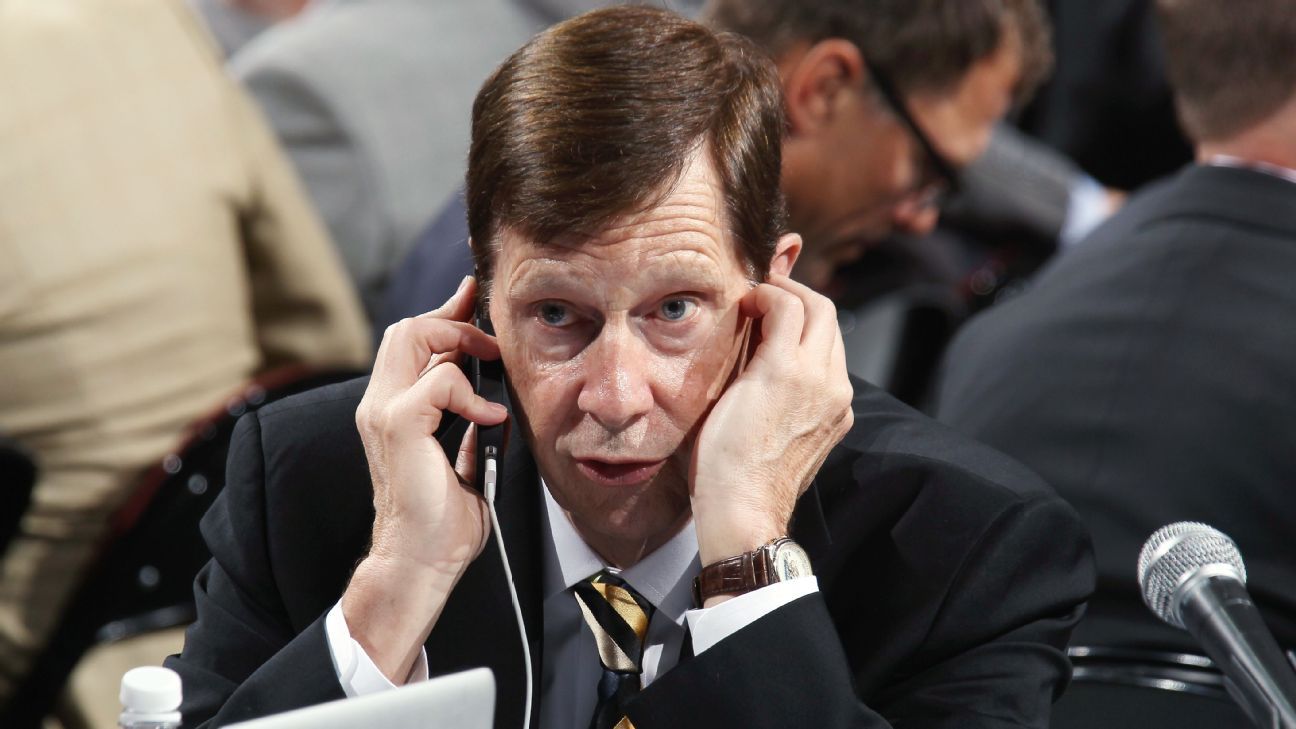
If I were the Leafs, I would be willing to pay for cap space. Rather than taking on Forsberg’s full $6M cap hit, I would rather give up extra picks and prospects in order for Nashville to retain salary.
We’ve seen the Leafs do this before, as the Colorado Avalanche retained half of Tyson Barrie’s $5.5 million cap hit in the Nazem Kadri trade. We also saw the Leafs land a draft pick for retaining part of Robin Lehner’s salary at last year’s trade deadline, not to mention all of the bad contracts the team took on during their rebuilding days.
The cap space would be more valuable to the contending Leafs than the “re-tooling” Predators, who could retain up to 50% of the contract in exchange for a bigger haul. The Leafs could also involve a third-team like Detroit to retain part of the salary in exchange for a prospect or draft pick. This wouldn’t exactly make the Leafs the New York Yankees of the NHL, but they could essentially be a $84.5 million team that competes against other $81.5 million cap teams. It gives them a significant edge.
As mentioned above, the Leafs gave up a first-round pick in the trade for Jake Muzzin, who carried a $4 million cap hit at the time. For simplicity’s sake, we could assume that $2 million of Forsberg’s $6 million cap hit could be retained.
Prior to being moved in the Muzzin trade, Durzi was Toronto’s second-round pick in their previous draft. He would be comparable to current prospects like Topi Niemela or Roni Hirvonen. Carl Grundstrom, a good AHL forward at the time with bottom-six NHL upside, ended up making his NHL debut with the Kings shortly after the trade. While I would take Joey Anderson over Grundstrom, he’s probably at least somewhat comparable.
Here’s a quick comparison:
2019 Jake Muzzin ($4M cap hit): First-round pick, D Sean Durzi, W Carl Grundstrom.
2021 Filip Forsberg ($4M cap hit*): First-round pick, D Topi Niemela, W Joey Anderson.
*Note: Forsberg’s $4 million cap hit assumes there is $2 million of retention here
This likely isn’t enough for Forsberg. First, the Leafs probably got the better end of the Muzzin trade. If the Kings had a time machine, they’d probably want a little bit more in return.
Second, Forsberg probably carries more trade-value than Muzzin did, although I think they are at least in the same ballpark.
Third, trading Muzzin didn’t leave the Kings with any sort of cap hit burden, but we’re assuming that the Predators (or some other team) would retain $2 million in this scenario. For reference, the Detroit Red Wings acquired a 2021 second round pick in exchange for taking on Marc Staal’s $5.7 million cap hit from the New York Rangers (although his base salary is $3.2 million and he is playing games for them).
Alex Kerfoot
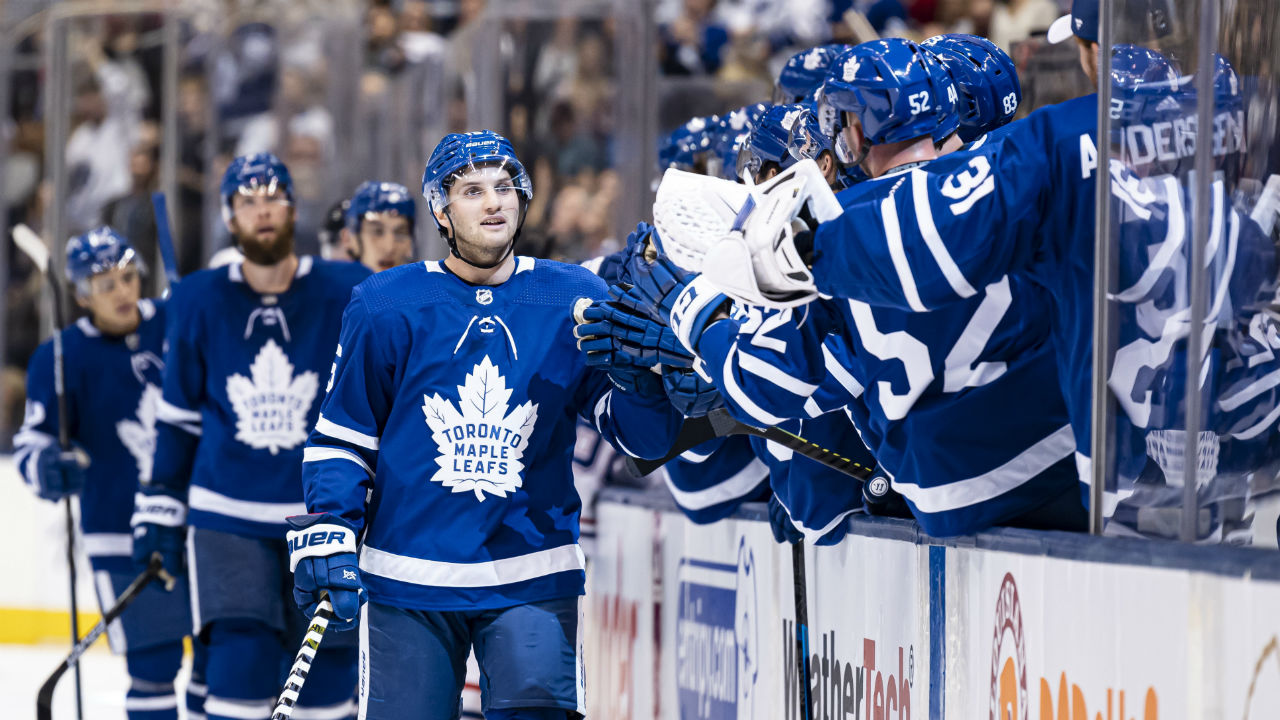
Andreas Johnsson and Kasperi Kapanen were both traded away by the Leafs this offseason, allowing Toronto to offload a pair of cap hits in the $3 million to $3.5 million range and sign T.J. Brodie with the availed space.
Like Brodie, someone would have to be moved in order to fit Forsberg’s cap hit on the books. Similar to Johnsson and Kapanen, Kerfoot is a valuable contributor to the team, but he isn’t in the same ballpark as Forsberg.
Kerfoot’s trade value would probably fall somewhere between Johnsson and Kapanen. Johnsson was coming off of a pretty serious injury, and while the Leafs ended up getting Joey Anderson in return, it sounds like the Leafs could have added a second-round pick instead. Unlike Kerfoot, Kapanen is a RFA when his current contract expires, but landing the 15th-overall pick plus another prospect was an overpay by Pittsburgh from day one.
Kerfoot’s $3.5 million AAV contract expires after the 2022-2023 season, but he is paid just $2.7 million in salary in the final two years of the deal. He can play both center or wing with 5-on-5 production rates that continue to be quite strong. He would surely fetch a second-round pick in a trade, or perhaps even a late first.
The Leafs would be counting on Pierre Engvall or Travis Boyd to be their third-line center for the remainder of this season. They could move William Nylander, Jason Spezza, or Joe Thornton there as well. At this point, they probably have enough options to at least consider the possibility of trading Kerfoot if there’s a big enough piece coming back.
Morgan Rielly
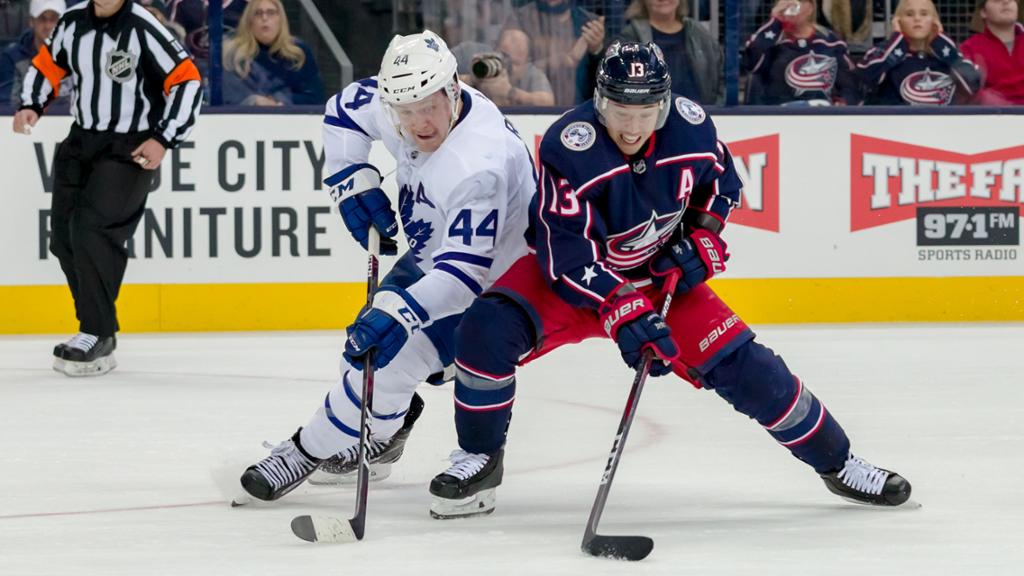
Rielly’s name is starting to crop up in trade suggestions for several reasons.
First, while his point total is impressive, he hasn’t been one of Toronto’s top three defensemen this season.
Second, with a contract that expires after next season, Rielly is not a player the Leafs will want to let walk for nothing.
Third, there’s an expansion draft coming up this summer where they’ll probably want to protect all three of Muzzin, Brodie, and Holl, who come with more years of control.
Fourth, they have two good young offensive defensemen who are close to NHL ready in Rasmus Sandin and Timothy Liljegren.
Given his ice time and point totals, Rielly is almost certainly going to command a big contract when he hits free agency in 2022. Not exactly swimming in cap space at the moment, it’s going to be difficult for the Leafs to keep him around.
Given his defensive shortcomings, Rielly is likely a player whose trade value exceeds the actual value he provides on the ice. I’d be very hesitant to give him a big contract extension. There is a real chance that you get a team to overpay for him in a trade.
Here’s the problem: If you trade Rielly, you probably need to get another defenseman back in a trade. They need some sort of offensive defenseman who can play on the power play and drive 5-on-5 offense. While you could dress Sandin, Liljegren, or Lehtonen, you are then one injury away from having a pretty thin blue line.
As a result, if Rielly is traded, I think it’s probably a move that you make in the offseason. Rielly wouldn’t make a lot of sense for Nashville anyway, as they already have Roman Josi and Rielly only comes with 1.5 seasons of control.
You could potentially trade Rielly to a third team then flip those assets for Forsberg, but that’s a pretty complicated trade to pull off. Frankly, I think the Leafs are happy with their blue line for the first time in years and don’t have an appetite to mess with it right now.
The expansion draft may force a trade this offseason, but I don’t expect Rielly to move before then.
Toronto’s Prospects
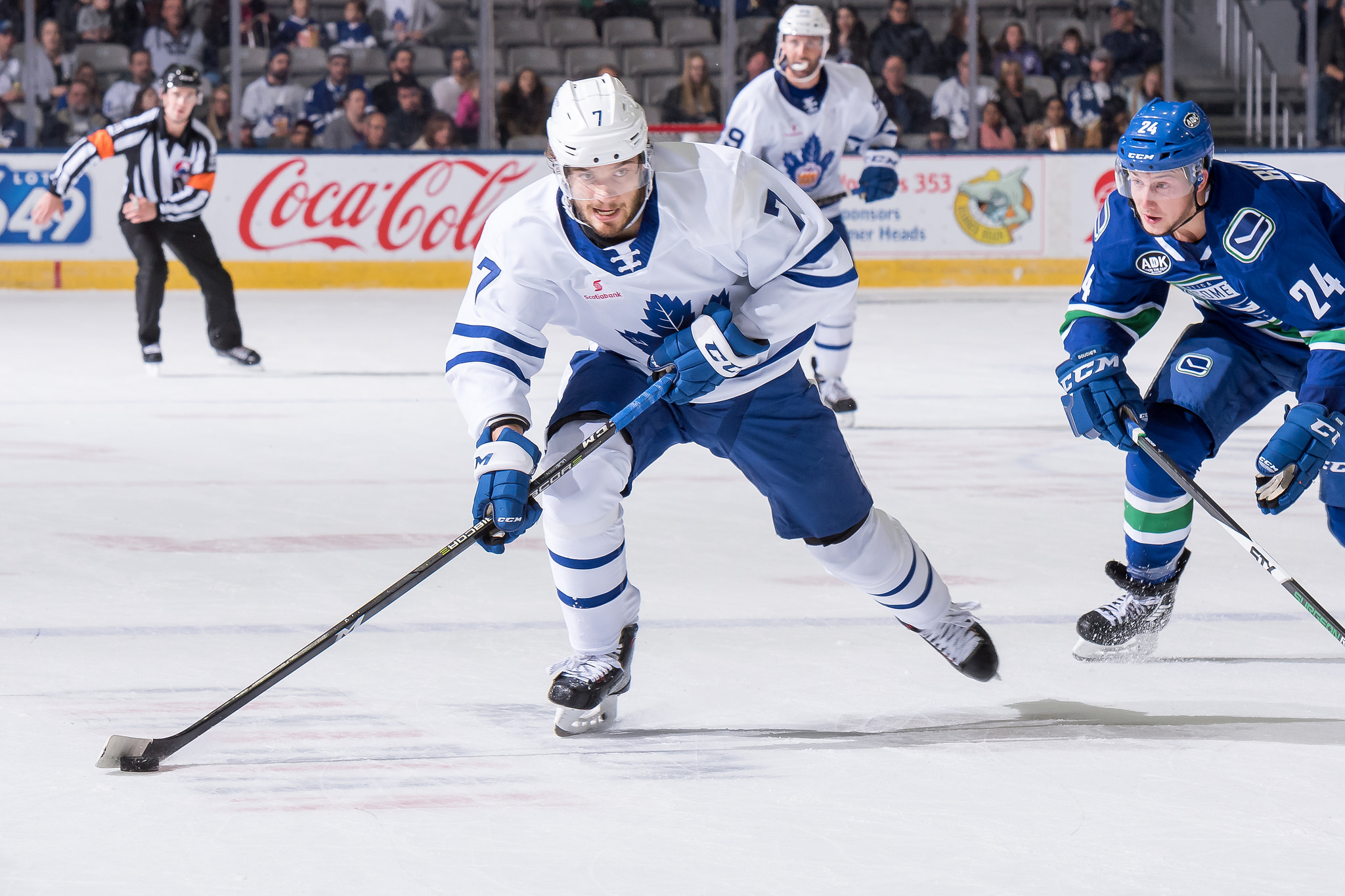
On April 13, 2013, the Washington Capitals acquired 2.5 seasons of Martin Erat along with Michael Latta in exchange for prospect Filip Forsberg. Erat was a good top-six winger who had scored 58 points in just 71 games the previous season, but he certainly wasn’t worth a young Forsberg. If you want an example of why to be careful when trading away top prospects for players with minimal control, look no further than Forsberg himself.
Nick Robertson is not going anywhere. He scored 55 goals in 46 OHL games last season as a player who was a week away from being 2020 draft eligible. He also made his NHL debut in a playoff series as a teenager. He’s currently the most dangerous offensive player on the Marlies despite the fact that he doesn’t turn 20 until September. They simply aren’t trading him for a 1.5 year rental.
Rasmus Sandin is probably not going anywhere. On top of the fact that he was good enough to make his NHL debut as a teenager, the Leafs are probably going to lose a defenseman in the expansion draft. Unless they are planning on extending Rielly, they are going to need someone with Sandin’s offensive profile on their team. Like Robertson, I don’t think he’s getting moved for someone with 1.5 years of control.
I’d rather give up first-round picks rather than Timothy Liljegren or Rodion Amirov. These prospects are closer to helping the Leafs than the first-round picks would be. The Leafs are going to need good players who are on their entry level contract over the next handful of years to complement their expensive core.
Liljegren currently looks like a player who is going to force his way onto the Leafs roster next year (he’s been the Marlies best player thus far), while Amirov is already a top-nine player on a good KHL team. I think both players would likely be undervalued as trade pieces rather than overvalued. I’d rather give up the picks instead.
William Nylander
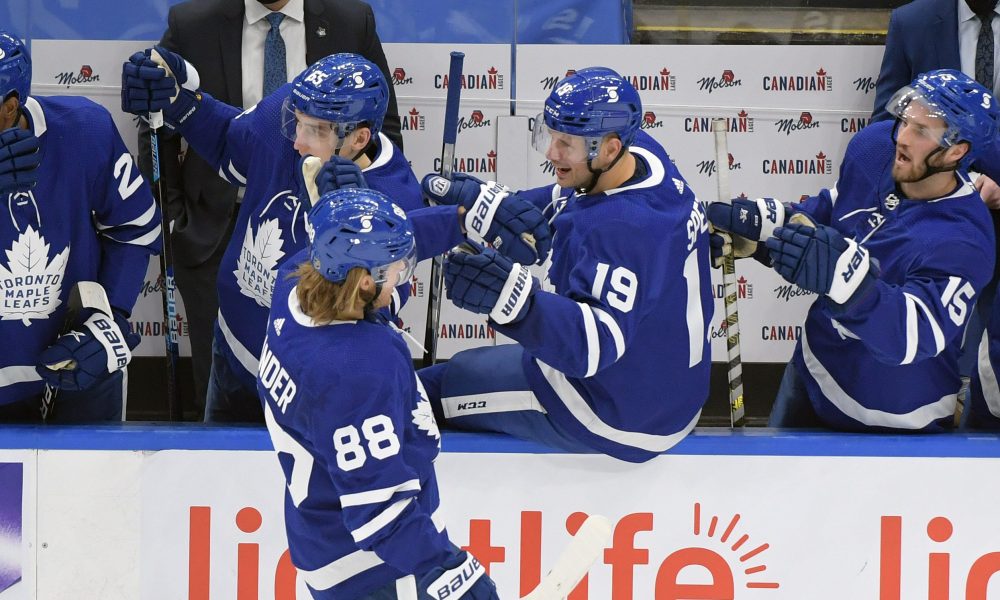
Benched towards the end of the third period on Saturday night, Nylander’s name will naturally be brought up in trade speculation. I think Forsberg is probably a little bit better than Nylander, but I don’t think I want to trade four seasons of Nylander for two seasons of Forsberg. Would the Leafs really be that much better? Even if they swapped them one-for-one, I’d still want Toronto to go out and add another impact forward.
I would strongly prefer to hold onto a 24-year-old player who had 31 goals in 68 games last season, which was a 37-goal pace over an 82 game season. I’m far more interested in watching a second line of Forsberg, Tavares, and Nylander than I am in swapping in Forsberg for Nylander. As a buyer at the deadline, you want to subtract from the current roster as little as possible.
Even if I was set on trading Nylander, I would wait to pay his $3.5 million signing bonus this summer. Once that is paid, he would only be due $14.5 million over the last three years of his contract, or about $4.83 million per year. His deal will carry significant value for non-cap teams.
I’d want a haul of controllable talent in the deal rather than just one player with 1.5 years of control. All in all, I’m skeptical that the Leafs would win a Nylander trade. His trade value is likely less than the actual value he brings to the team.
What’s a Forsberg Trade Look Like?

Let’s start with the Jake Muzzin trade, which worked out quite well for Toronto.
The Leafs first round pick is likely slightly less valuable this year given that it’s a weak draft, but I wouldn’t say that there’s a massive difference. Let’s use Topi Niemela, who really impressed at the World Juniors, as this trade’s version of Sean Durzi. Joey Anderson can play the role of Carl Grundstrom.
As mentioned above, that’s probably not enough, as the Leafs would probably like Nashville to retain salary and Forsberg probably carries a little bit more value than Muzzin did. Let’s add Alex Kerfoot in to make the dollars work. We’ll assume he’s worth a very late first round pick or an early second round pick. If Nashville (and/or another team) retains $2.5 million of Forsberg’s salary, he would match Kerfoot’s cap hit.
TOR gets: LW Filip Forsberg with $2.5M retention (1.5 years, $3.5M cap hit).
NSH gets: 2021 first round pick, C Alex Kerfoot (2.5 years, $3.5M cap hit), RD Topi Niemela, RW Joey Anderson.
To recap, this is fairly close to the Muzzin trade, but we’ve added in Kerfoot to make the dollars work and to add some additional value in because of the salary retention. Kerfoot’s contract is front-loaded, so he’s only due $2.7 million per season following this season, rather than $3.5 million. This helps to offset a little bit of the Forsberg retention.
From Toronto’s perspective, their cap situation would essentially remain the same, but with Forsberg in for Kerfoot. From Nashville’s perspective, they get more for trading Forsberg now rather than trading him as a rental next season. If they don’t want to retain the full $2.5 million, a team like Detroit could be involved and someone like Joey Anderson or Filip Hallander could head to the Red Wings instead of the Predators.
Does that package get the deal done? If not, how far off is it? Would adding a second-round pick or a prospect like Roni Hirvonen or Nick Abruzzese tip the scales?
If you think Toronto is giving up too much here, would adding a rental forward like Mikael Granlund or Erik Haula convince you? They can bargain over the exact trade, but I think the Muzzin trade leaves us with a decent framework of what it might take.
Final Thoughts
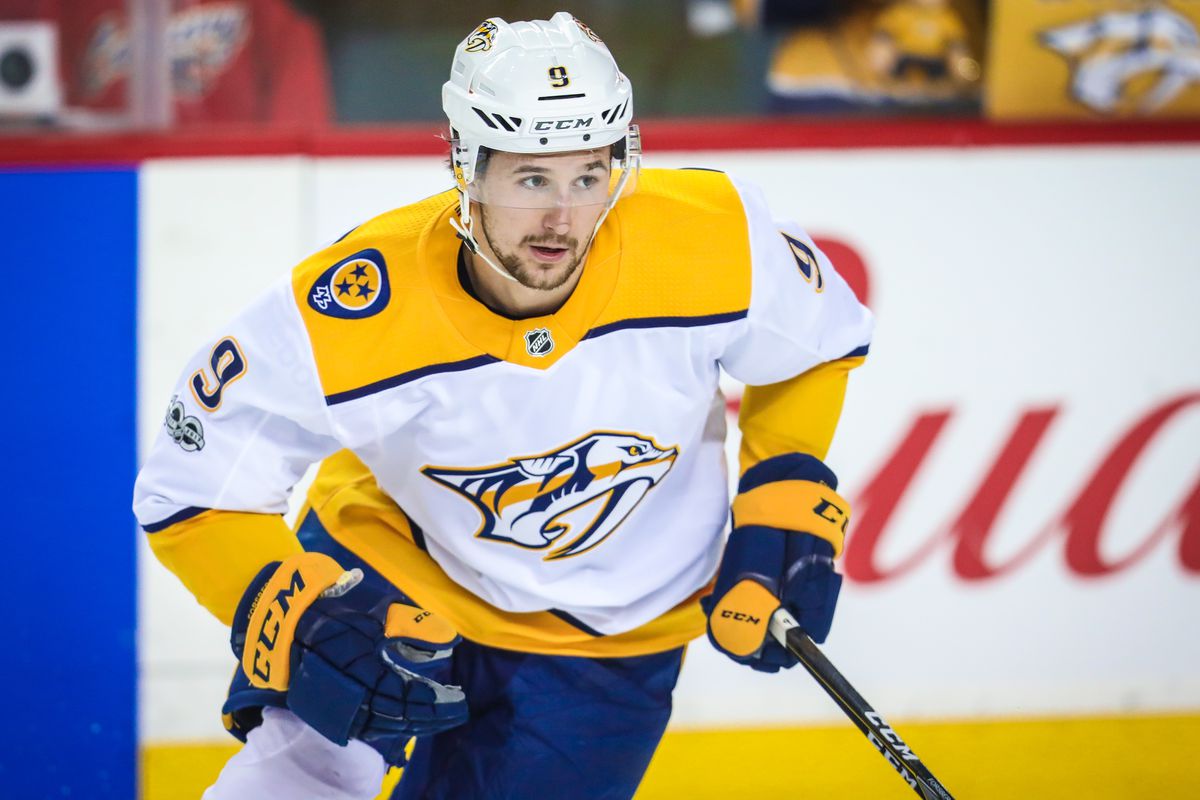
The Leafs are a good team that should be looking for difference makers. Certainly a difference maker, Filip Forsberg should be a player the Leafs are interested in if he is available.
They may have to pay extra in terms of picks and prospects in order to make the dollars work, but doing so could make sense for both sides.
If Nashville isn’t interested in this type of deal, perhaps the Leafs look at more of a traditional “rental” trade for Kyle Palmieri or Mikael Granlund instead. However, given Dubas’ trade history with the Jake Muzzin deal, I think he’ll be in on more controllable players as well rather than rentals only.
Since entering the league, Forsberg has scored at a rate of 2.13 points per 60 minutes at 5-on-5. Those numbers are pretty much identical to what John Tavares has done over that time period. Among the 369 forwards with 3000 minutes during this time, Forsberg ranks 32nd in this statistic. He also ranks 14th in this group in 5-on-5 takeaways per minute.
He’s a legitimate first-line forward with a strong playoff track record. He’s also only 26. While Matt Duchene and Ryan Johansen are fine players, it’s not like his numbers are inflated from playing with a Connor McDavid or Sidney Crosby. He’d surely make Toronto’s second line a force to be reckoned with.
This is the best Leafs team that I’ve seen in quite some time. Kyle Dubas may be ready to make an all-in push to try to put this team over the top. If the Leafs want to go all in, Filip Forsberg could be the perfect addition to this roster.
This isn’t about filling a need. This is about putting yourself in the conversation with the Tampa Bay Lightning, Colorado Avalanche, Boston Bruins, and Vegas Golden Knights as the best team in hockey.





















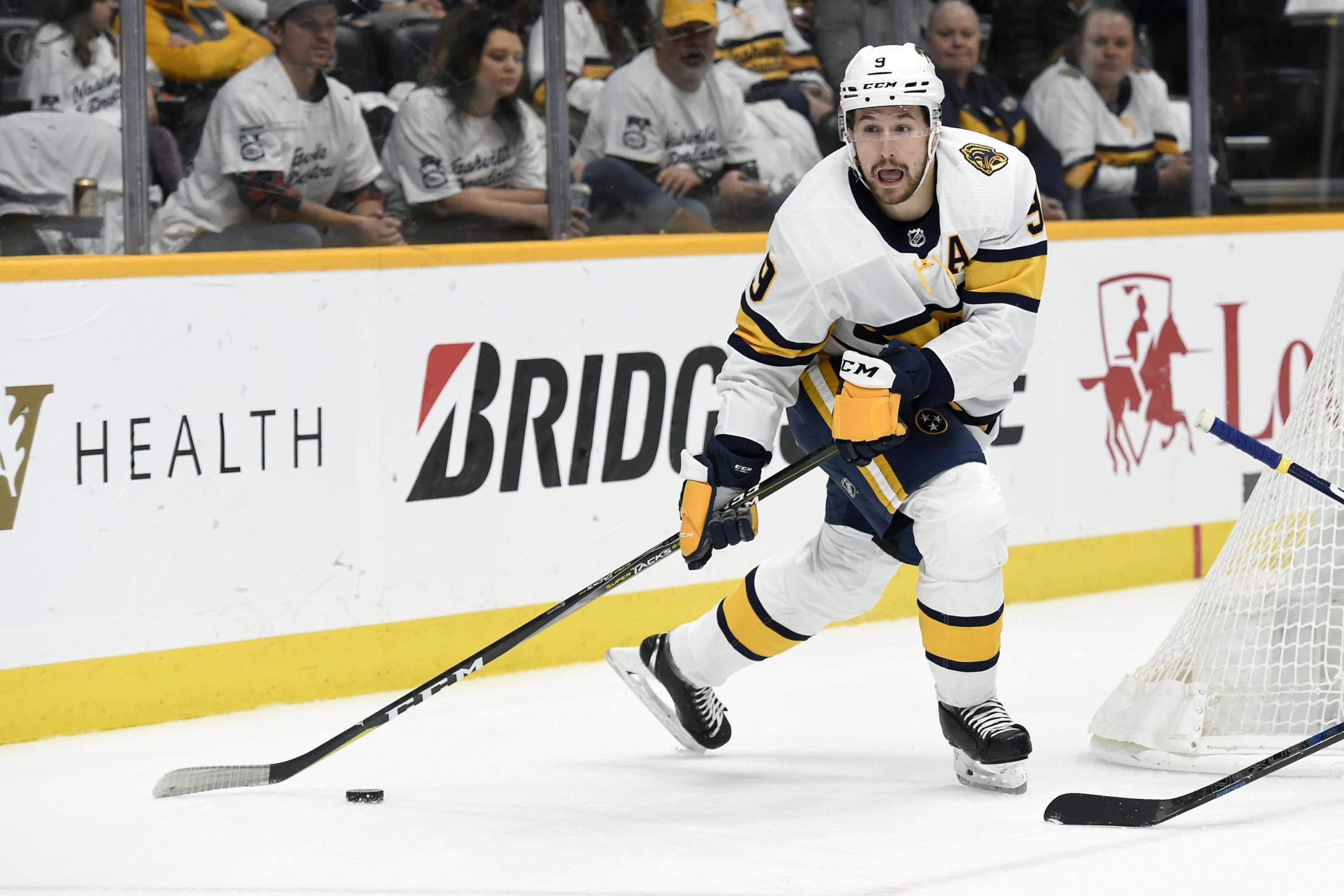








![New Leaf Anthony Stolarz on the opportunity in Toronto: “In Florida, I knew my role as a backup… Now, [Joseph Woll] and I are competing for starts… As a goalie, that’s all you can ask for” Anthony Stolarz, Stanley Cup win, now Maple Leaf](https://mapleleafshotstove.com/wp-content/uploads/2024/07/anthony-stolarz-sc-100x70.jpg)
